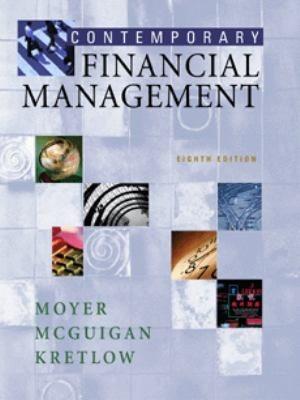Question
Suppose the risk-free interest rate is 3%, and the stock market will return either 15% or -9% each year, with each outcome equally likely. Compare
Suppose the risk-free interest rate is 3%, and the stock market will return either 15% or -9% each year, with each outcome equally likely. Compare the following two investment strategies: (1) invest for one year in the risk-free investment, and one year in the market, and (2) invest for both years in the market.
a. Compute the expected final payoff of each strategy.
b. Compute the standard deviation of the final payoff of each strategy.
c. Briefly explain which strategy you would adopt.
Suppose the risk-free interest rate is 3%, and the stock market will return either 15% or -9% each year, with each outcome equally likely. Compare the following two investment strategies: (1) invest for one year in the risk-free investment, and one year in the market, and (2) invest for both years in the market.
a. Compute the expected final payoff of each strategy.
b. Compute the standard deviation of the final payoff of each strategy.
c. Briefly explain which strategy you would adopt.
Step by Step Solution
There are 3 Steps involved in it
Step: 1

Get Instant Access to Expert-Tailored Solutions
See step-by-step solutions with expert insights and AI powered tools for academic success
Step: 2

Step: 3

Ace Your Homework with AI
Get the answers you need in no time with our AI-driven, step-by-step assistance
Get Started


